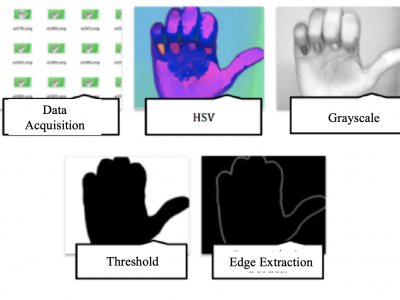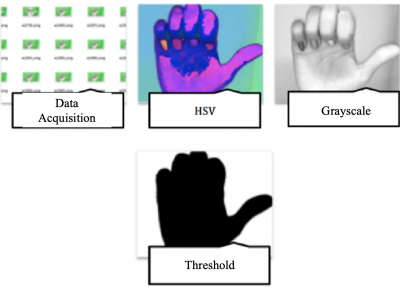Datasets
Standard Dataset
EMG Signal and Upper Limb Movement Dataset with Position and Angle Error Quantification.
- Citation Author(s):
- Submitted by:
- Camila Clavijo ...
- Last updated:
- Mon, 05/20/2024 - 19:10
- DOI:
- 10.21227/p38b-7191
- Data Format:
- License:
 660 Views
660 Views- Categories:
- Keywords:
Abstract
A database was created in .XLSX and .CSV formats containing the processing of an EMG signal and the position and angle error during the execution of three dynamic tasks based on the three-dimensional movement of the upper limb. This data was recorded from the quantification of the hand position error. The database comprises 166 rows and 18 columns, with parameters including the number of muscular activations, maximum muscular activation duration, minimum muscular activation duration, average muscular activation duration, standard deviation of muscular activation duration, maximum sample value, minimum sample value, average sample value, standard deviation of sample value, RMS (Root Mean Square), area under the curve, total power spectrum, median frequency, muscular fatigue, maximum power frequency, activity, joint angle, and position error.
Open the folder containing the dataset and locate two documents: one with the extension .XLSX and the other with the extension .CSV. Each document contains a database that comprises 166 rows and 18 columns. The parameters included in the database are the number of muscular activations, maximum muscular activation duration, minimum muscular activation duration, average muscular activation duration, standard deviation of muscular activation duration, maximum sample value, minimum sample value, average sample value, standard deviation of sample value, RMS (Root Mean Square), area under the curve, total power spectrum, median frequency, muscular fatigue, maximum power frequency, activity, joint angle, and position error.
Dataset Files
- The database is available in the extension .CSV. EMG Signal and Upper Limb Movement Dataset with Position and Angle Error Quantification..csv (18.71 kB)
- The database is available in the extension .XLSX EMG Signal and Upper Limb Movement Dataset with Position and Angle Error Quantification..xlsx (30.53 kB)










Comments
.
"